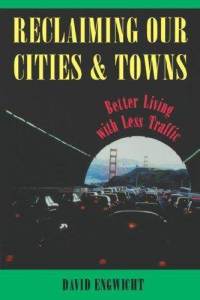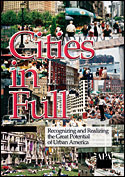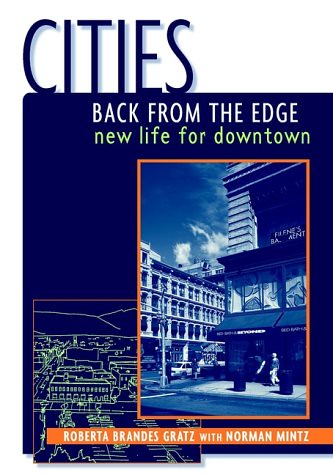(Nothing changes on) New Year's Day
Note that I am listening to the "Top Tracks for the Murder City Devils" on youtube while writing this.
Maybe I'll write some "New Year's Day" "resolution" posts specific to 2013, like I did in 2010, maybe not.
These are from 2011:
-- New Years post #2: sustainability and energy
-- New Years post #3: How about more community self-help? (Peter Riehle and Eastern Market Metro Plaza)
-- New years post #4: How to Keep Resolutions and change behavior
-- New years post #5: DC City Council Committees and striving to be a world class city
-- New years post #6 -- the crazy thing about U.S. zoning is that it's not designed to maximize overall land value
-- New Years post #7: Anacostia and sustainable economic development and revitalization
-- New years post #8: Shattering the myths of sustainability
Frankly, the post from last year is worth reprinting with a couple edits, so that's what I'll do.
However, last year I had a nightmare about being on City Council as a temporary appointee and I wrote a blog entry about it. The agenda in that piece is just as fresh and apt today.
-- Ideal Mayoral/City Council candidate campaign agenda: Getting Our City's S*** Together
------
... One of the legitimate criticisms of my blog entries is that they are too detailed and complete and ask for too much. Most people can't fully grasp even one idea, let alone 20 ideas. (I write the way I do to be thorough and complete and somewhat unassailable, plus I don't want to offer such weak arguments that someone like me could savage them.)
I'm going to lay out the five to seven most important items and leave it at that.
1. The City and its leadership, including the Washington Post editorial page, should commit to supporting, encouraging, and enabling substantive public participation, democracy, and civic engagement.
For the Post, that means treating citizens and public processes in the city with the same respect they treat protesters in Tahrir Square in Egypt, Russia, and other "foreign" countries.
It means instead of constantly suggesting through editorials that civil society be constrained, instead put forward proposals that enable and strengthen civic involvement through capacity building and the creation of robust open and transparent processes that are citizen-centered.
For the executive and legislative branches of the city, it means according citizens the respect that their position in democracy warrants--government derives from the people--and thereby reorienting practices and policies that respect citizens, including:
a. opening up information instead of forcing citizens to file FOIA requests;
b. scheduling public meetings in places that are convenient to get to and Metro accessible for a majority of the citizenry;
c. developing a robust protocol for District/neighborhood planning (comparable to sector and neighborhood conservation district planning in other jurisdictions in the region) that defines citywide and neighborhood objectives, and works to make them more congruent;
d. developing a robust capacity building infrastructure that supports civic engagement and community organizations (like the training infrastructure of the Minneapolis Neighborhood Revitalization Program and the Massachusetts Citizen Planner Training Collaborative, the "Government 101" programs offered by many cities, and , the Urban Information Library at the main branch of the Dallas Public Library).

That means that we need to be better more engaged citizens too.
2. The Washington Post needs to run more local news.
In the Metro section on Friday, one of the key articles was about how someone who went to the University of Maryland is running for Congress--IN CALIFORNIA!
So what. It's not a story relevant to us in terms of the region's local news, so it's not a Metro section story.
In looking at Post articles, issues, and sections from decades ago, far more stories of local interest ran in the paper, stories about neighborhoods and real estate developments. Now, very little of that kind of coverage seems to be running in the paper.
 While traveling last week, I came across an article, "Durham architect Freelon named to national arts commission," in the Raleigh (NC) News & Observer about architect Phil Freelon of Durham being appointed to the US Commission of Fine Arts--the body in DC that weighs in on urban design in the city as it relates to the federal interest--and I was thinking that this is an appropriate "local news story" for the Washington Post, because the CFA is an important local body, making decisions that shape the city for decades to come. Yet, I expect we'll never see such a story in the "local" paper. [In 2012, the Post has written about Mr. Freelon in terms of his firm being the lead architecture design firm for the forthcoming National Museum of African American History and Culture.]
While traveling last week, I came across an article, "Durham architect Freelon named to national arts commission," in the Raleigh (NC) News & Observer about architect Phil Freelon of Durham being appointed to the US Commission of Fine Arts--the body in DC that weighs in on urban design in the city as it relates to the federal interest--and I was thinking that this is an appropriate "local news story" for the Washington Post, because the CFA is an important local body, making decisions that shape the city for decades to come. Yet, I expect we'll never see such a story in the "local" paper. [In 2012, the Post has written about Mr. Freelon in terms of his firm being the lead architecture design firm for the forthcoming National Museum of African American History and Culture.]Granted the Post covers the metropolitan area, and DC proper is only the third or fourth largest submarket for the paper--Fairfax, Montgomery, and Prince George's County have more subscribers, and at least in the days of the go-go real estate market, much of the real estate section advertising came from subdivisions being constructed in the outlying areas, I know that the "city's" major metropolitan area has a lot more to cover than in the "old days" when the city made up the bulk of the region's population and activity.
Still, without reading the local community papers--the Gazette papers in Maryland (owned by the Post actually), the Current newspapers in DC, the Connection papers in Northern Virginia--it's almost impossible to get a sense of what's happening in the Metro area or DC by relying on the Washington Post.
I know that the digital information revolution has completely changed the role of newspapers as primary media, but if the paper doesn't cover the local region, it ends up having no real anchor, because increasingly, "national" news, or the coverage of the federal government is being supplanted by specialized publications like Politico.
Digital media entries aren't enough--the Post has journalist-bloggers covering the local jurisdictions--articles need to run in the paper, because otherwise the articles aren't retained and indexed for posterity.
3. Rather than spend so much time on achieving "statehood" maybe the Executive and Legislative branches ought to be focused on making the city be great in the here and now--a "city on the hill," where the city's achievements would be seen as supporting evidence for statehood claims, rather than blaming prevailing mediocrity as the product of lack of self-determination.
 4. The organization of City Council should probably be changed.
4. The organization of City Council should probably be changed. a. Make it a part time legislative body truly;
b. By cutting the salaries to about $60,000 from $130,000 currently ("D.C. Council members bring in second-highest salaries among big cities" from the Examiner);
c. Increase the size of the body (I go back and forth about this) to 24 members + the Council Chair -- it's 12 members + the Council Chair currently -- to 2 members for each Ward and 8 At-Large members;
[Note that in a separate blog entry today I am going to revisit this particular recommendation.]
It seems counter-intuitive, but adding more members will make elected office more competitive, because the winner take all system advantages incumbents and the dominant party, in this case the Democratic Party, stultifying the political environment in ways that are truly deleterious to local government and civil society.
It will also make it harder to pass legislation -- 13 members will be required to pass legislation instead of 7 members now. This would add a level of discernment and a kind of check that isn't in place now ("Is D.C. overgoverned? Or undergoverned?" from the Post).
 5. At the same time I wish the Councilmembers would take their responsibilities seriously and research ideas and concepts before writing and introducing cockamamie legislation and then putting surveys up afterwards to get input after the legislation has already been submitted.
5. At the same time I wish the Councilmembers would take their responsibilities seriously and research ideas and concepts before writing and introducing cockamamie legislation and then putting surveys up afterwards to get input after the legislation has already been submitted. 6. DC should create robust master transportation and parks and recreation plans for the city, and transform its planning processes to engage and educate the citizenry.
I've written plenty on that over the years. This link lists a bunch of entries on parks planning and the connection between parks planning and quality of life.

Note that in 2013, I would add Jan Gehl's Cities for People to this list. It's a super well illustrated book about what it is that makes cities livable. It's not super technical either.
I would add Get Urban too, but it's out-of-print. However, in communication with the author, he said he is working on a new edition. See the blog entry "Get Urban 2.0."
Labels: electoral politics and influence, media and communications, participatory democracy and empowered participation, provision of public services, urban design/placemaking, urban revitalization



6 Comments:
I'm working through Belmont for new years. Less than impressed, although I have to keep in mind the book is very dated. That being said, it rather builds towards my earlier feeling that cities are too important to leave to planners.
Someone else I have a great deal of respect for (he actually works for the APA) doesn't like Belmont either.
For me, you have to remember the context I first read it in. It was probably 2003. I had been trying really hard to figure s*** out, why was DC f*ed, working on issues in my neighborhood, dealing with commercial district revitalization on H St. as a founding board member of H Street Main Street, having lived in and around H St. for about 15 years, figuring out the value of historic building stock, starting to go to NTHP conferences and being exposed in a systematic way to other cities, etc.
It seemed then like everything I had figured out through trial and a lot of error he already laid out, in a rigorous fashion.
I loved it.
The best things about the books are the first chapter putting numbers to Jane Jacobs and his discussion of monocentric vs. polycentric transit.
My joke is that the thing I figured out that he didn't in terms of WMATA is that while yes WMATA is a polycentric system, at the core in DC the subway system functions monocentrically.
Basically the DC system is like Bart+MUNI in SF--he contrasts BART and MUNI in the book.
BART is mostly a commuter railroad as it relates to SF. I wasn't able to get to Oakland to see if the impact is different there. But Oakland doesn't have a local MUNI equivalent, which has to be a contributor (but by no means the only factor) in the difference in the comparative success of the two communities.
DC benefits as if it had MUNI. (We could with the addition of streetcars but our vision is too plebian, at least right now, which is something I want to write about but sadly I seem to have misplaced my photo card....)
I think MUNI is pretty amazing. BART is basically a commuter railroad, but it works for SF's downtown.
But experiencing BART+MUNI last week, I admit I was thinking about your comments on this blog, in terms of how WMATA's success is built on the hyper concentration of federal agencies proximate to transit stations (mostly in DC's CBD but not exclusively) AND THE FEDERAL TRANSIT BENEFIT.
And that the further deconcentration of federal agencies outside of the core will have unintended deleterious consequences for WMATA.
Yep, agreed that the context you first read it would matter, most of the ideas have been presented to me in the past 10 years.
Belmont actually has a charge on transit use and density, and you can see DC as an outlier even 10 years ago. And that goes to your point that DC needs to be focused on a new blue line, which would be urban centric, when the feds are willing to invest in federal-worker mover systems.
I admire that he is willing to talk about crime. However, he really misses immigration and the new suburban immigration (in the context that Mont. county and Fairfax are far more diverese in DC). Trust me, new Asian immigrants aren't hankering for city life.
He's also a big too quick to dismiss "land hogs" single family housing, as you need upper-income people in a city. DC w/o the leafy NW would have died in the 90s without tax revenue. I fully accept the need for density around high quality transit, but "density everywhere" ins't going to work so well.
wrt your point about land hogs, it's why I am fine with intensifying at Metro stations (e.g., in Brookland or Takoma or Petworth etc.) while for the msot part, leaving the rest of a neighborhood unchanged (except for adding ADUs if possible).
The point is to provide a variety of types of appealing housing options, for people with different incomes, interests, household types, etc.
But besides the fact of regular poverty and multigenerational household poverty, in order to be successful, neighborhoods have to be able to attract people with income.
E.g., my criticism of the Good Jobs First approach to ec. studies of inner city neighborhoods is that it doesn't matter if a household has 2 poor people or 4 people because at the end of the day they still aren't going to spend enough money to revive a neighborhood commercial district.
I have always liked how DC has rowhouse neighborhoods and detached housing neighborhoods and apartment communities (e.g., up Wisconsin, Connecticut, Massachusetts Avenues and 16th St.) etc.
The thing is what made a successful neighborhood successful economically over long periods of time (this goes for commercial districts too) has changed as the nature of local and national economies have changed, and we need to be able to, as best as we can, integrate different housing types in order to accommodate different types of households and different income levels.
This got left off the last sentence:
for those changed circumstances in the 21st century.
Great information. This works great for me. Thanks for sharing this.
Post a Comment
<< Home